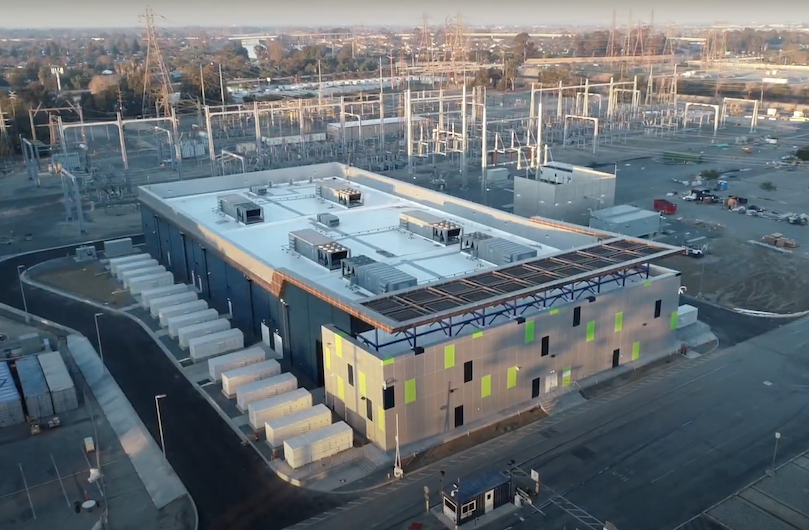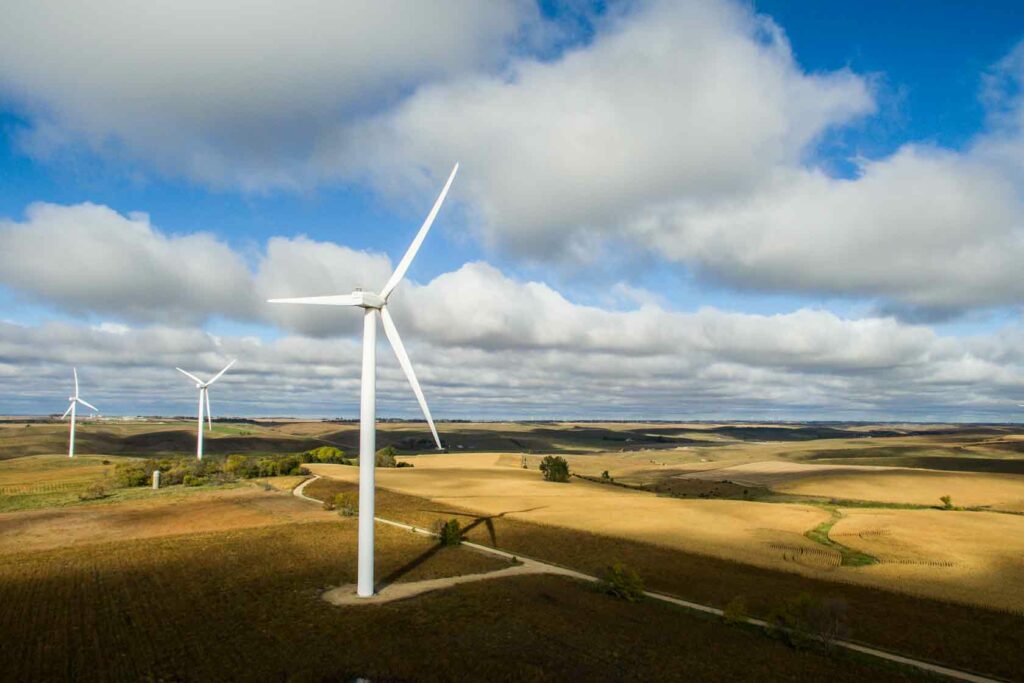
In addition to bringing you the biggest news from the energy storage industry, Energy-Storage.news is proud to be able to offer deeper insights, analysis, opinions and sometimes some surprising unique perspectives in our blogs and feature articles.
So while we’re waiting to get started up for what looks like being a busier year than ever in 2022, let’s look back on 2021 as we reveal which of those were the most read on the site during the year.
Enjoy 12 months of exclusive analysis
- Regular insight and analysis of the industry’s biggest developments
- In-depth interviews with the industry’s leading figures
- Annual digital subscription to the PV Tech Power journal
- Discounts on Solar Media’s portfolio of events, in-person and virtual
Meanwhile, you can also read our Top 10 news stories of the year, in a list published earlier this week.
15 November 2021
The US’ Infrastructure Investment and Jobs Act (IIJA) was historic, bipartisan piece of legislation which aimed to prepare the country to create an economy fit for the challenges ahead.
Described by President Joe Biden as one of the two biggest steps the US could take to fight climate change, in this article we heard the views of energy storage industry players Ameresco, Burns & McDonnell, Stem Inc, Powin Energy, ESS Inc and the Energy Storage Association.
Meanwhile, the other big legislative step Biden referred to, the Build Back Better Act, hangs in the balance, but if it eventually passes it could introduce the investment tax credit (ITC) for standalone energy storage, which really could supercharge the industry.
9. Why 2020 was the UK’s ‘Year of Battery Storage’
18 February 2021
By the end of 2020, around 1.2GW of utility-scale battery storage had cumulatively come online in the UK, with a pipeline of more than 14.5GW more in development.
Experts Lauren Cook from our in-house Solar Media Market Research team and Tony Gannon, head of project management at energy storage asset owner, operator and developer Scottish Power, spoke to us about the phenomenal rise in demand and deployment throughout last year.
Solar Media Market Research has identified enormous progress even since then and we look forward to seeing even more happen in 2022. Follow our UK sites Current± and Solar Power Portal to keep your finger on the pulse.
8. Three new energy storage projects that prove the versatility and value of batteries for the grid
21 April 2021
Across the Atlantic, this blog examined how three recently announced or completed projects provided a cross-sectional snapshot of the benefits — and business case — for battery storage on the grid.
Energy storage as a utility transmission and distribution (T&D) asset in New York (also known as a non-wires alternative to building expensive T&D infrastructure), DC-coupled solar-plus-storage in Massachusetts and the deployment of mobile battery energy storage to provide locational flexibility were the three case studies featured.
7. Battery storage as peaking capacity: How Alamitos changed the game for California
7 June 2021
The 100MW / 400MWh battery energy storage system (BESS) deployed by AES Corporation in Alamitos, California, arguably changed the game worldwide for batteries, not just in the sunny US state.
Completed this year, Alamitos represents the first time battery storage won against natural gas in a competitive solicitation process, providing peaking capacity for investor-owned utility (IOU) Southern California Edison (SCE).
The article, like some of the other entries in this list, was first included in our technical journal PV Tech Power, published every quarter of the year together with our colleagues at PV Tech.
6. Fluence IPO ‘can open investment doors for energy storage and renewable energy industry’
30 September 2021
We spoke to finance expert Charles Lesser of Apricum – The Cleantech Advisory ahead of technology provider Fluence’s IPO, which went ahead in late October, raising the company’s valuation to close to US$5 billion.
The IPO was a sign of maturity for the energy storage industry, Lesser said. It showed energy storage and renewable energy companies to be credible and well-positioned to grow enormously in the coming years. Fluence’s legacy owners Siemens and AES were ready to give the company — which offers renewable energy trading services in addition to its energy storage system and services range — a greater degree of independence, which boded well for the industry at large, according to Charles Lesser.

5. Renewables as baseload energy: Form Energy’s multi-day storage seeks to replace gas and coal
27 April 2021
Long-duration energy storage was definitely one of the biggest topics of interest and discussion for our readers throughout the year and that momentum seems to be gathering more pace ahead of 2022, from what we’ve heard from various industry sources.
While in the past it was often the long-duration energy storage companies themselves talking about the potential of the various technologies involved, this year almost everyone across the industry and beyond has been talking about the potential and need to store power for several hours, if not days or more.
Form Energy has promised that its novel iron-air chemistry battery technology could be a game changer in the fight against fossil fuels and in this interview ahead of the company’s grand reveal later in the year, CEO and co-founder Mateo Jaramillo spoke with us.
11 October 2021
Although we heard — rightly so — that energy storage in the UK has already gained a huge amount of market traction and a place in the country’s low-carbon energy transition, guest blog authors Antonia Silvestri and Gary Roscoe of law firm TLT wrote about some of the challenges still remaining.
Talking about energy storage at different scales, durations and applications, Silvestri and Roscoe said there is a very positive market dynamic in the UK in that energy storage assets can stack revenues successfully. Yet, as the country moves to higher shares of renewables, more needs to be done to unlock the potential of energy storage — particularly long-duration.
3. Vanadium flow batteries for a zero-emissions energy system
28 June 2021
The most-talked-about long-duration energy storage technology which isn’t pumped hydro is undoubtedly the flow battery.
For this PV Tech Power article, Ed Porter, business development director at vanadium flow battery provider Invinity Energy Systems detailed how the non-degrading energy storage technology can enable massive reductions in carbon intensity at on-grid and off-grid settings.
“We see a flexibility ‘merit order’ developing where lithium-ion batteries continue to address high-frequency stability and fast reserve response services (rewarding ‘power’) with rapid adoption of VFBs to capture growing revenue opportunities for years to come. Fundamentally, VFBs and other longer duration technologies bridge the gap between shorter duration applications, which are suitable for lithium-ion and the ultra-long duration (e.g. 24+ hour) applications where we are likely to see hydrogen and other “power-to-x” technologies make headway,” Porter wrote.
27 October 2021
Talking of flow batteries, this year Honeywell officially announced that it had created its own proprietary flow battery technology and would be deploying it in a small-scale test system next year and then a 60MWh pilot in 2023.
We spoke with Honeywell Sustainable Technology Solutions (Honeywell STS) vice president and general manager Ben Owens on the eve of the announcement.
We learned a lot about how the testing process, in collaboration with Duke Energy, will happen and what it will assess. While Owens said Honeywell won’t disclose the battery’s chemistry as yet, the flow battery uses abundant materials, non-toxic, environmentally safe materials, with “no need to build a specialised supply chain”.

1. Battery analytics: The game changer for energy storage
27 October 2021
As you can see from above, many things are variously described as game changers for clean energy or the energy storage industry — and many of them are.
It’s certainly an apt description for battery analytics, which truly put power into the hands of energy storage asset operators, intelligence into the hands of system designers and integrators and visibility to energy storage investors and other stakeholders.
In another article published via PV Tech Power, Sebastian Becker at Germany-based predictive battery analytics software company TWAICE wrote about the various ways smart analytics are crucial to the value proposition of battery storage.

